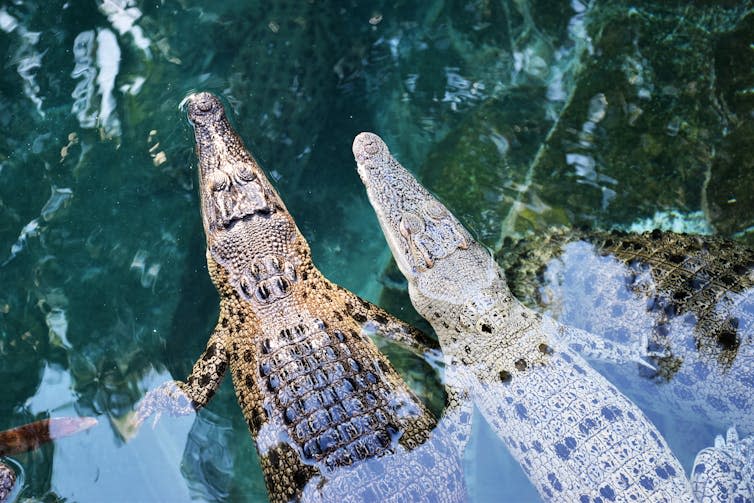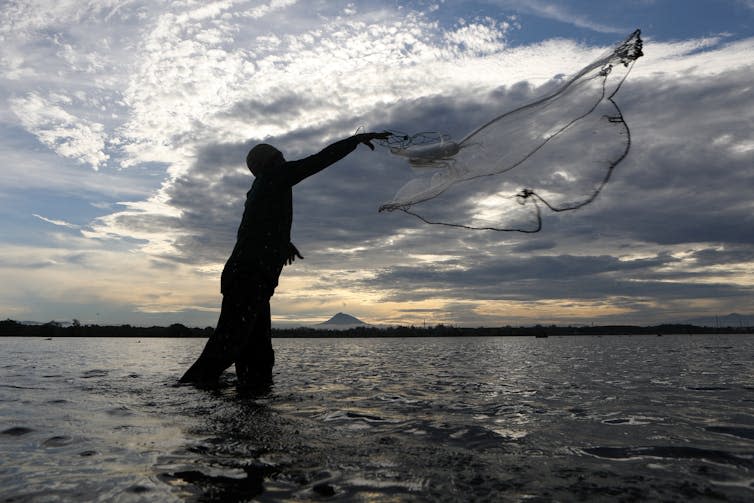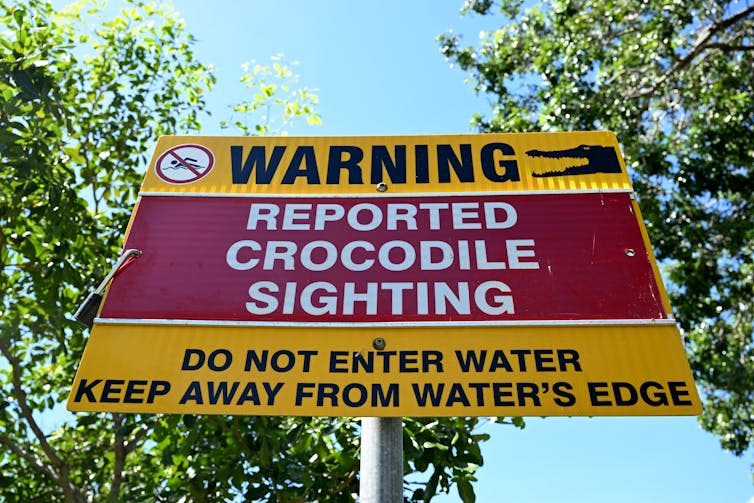PER BRANDON MICHAEL SIDELEAU
At the end of last week, the remains of a missing 12 year old girl was found after she was taken by a saltwater crocodile in Australia’s Northern Territory.
The incident occurred in a watercourse known as Mango Creek, near the community of Nganmarriyanga/Palumpa, in the remote and sparsely populated region of West Daly, about 350 kilometers southwest of Darwin.
Understandably, the tragedy provoked a strong reaction from the public – including debate over crocodile numbers In nature.
I am based in the Northern Territory and have worked extensively in the area of human-crocodile conflict management, including establishing Crocodile Attack, an open-source global database of crocodilian attacks. Amid the excitement surrounding this latest incident, it is important to remember that fatal crocodile attacks are extraordinarily rare in Australia – and there is no evidence to suggest that their numbers are too high.

Fatal crocodile attacks are extraordinarily rare in Australia. Photo: Shutterstock
Croc numbers do not equal attacks
Saltwater crocodiles in the Northern Territory number about 100,000 (excluding those who have just been born). Research shows about five crocodiles, on average, for every kilometer of watercourse.
Fatal crocodile attacks in the territory peaked in 2014, when four people died. Before the latest incident, the last fatal attack occurred in 2018, when an indigenous ranger was killed while fishing with her family.
The mortality rate is much lower than anywhere else in the saltwater crocodile’s range. In Indonesia, for example, at least 85 people were killed last year alone. Furthermore, crocodile incidents in Indonesian Papua are believed to go unreported, so the actual death toll is likely much higher.
Despite this, there appear to be far fewer crocodiles in Indonesia. Most research reveals densities significantly lower than one individual per kilometer in waterways.


Unlike in Australia, fishermen in Indonesia often have to enter waterways, putting them at greater risk of crocodile attack. Photo: Shutterstock
Why crocodile attacks are rare
There are several theories as to why saltwater crocodile attacks are comparatively rare in Australia.
First, Australians generally have access to clean water in their homes. Unlike people in, for example, Indonesia, they do not need to travel to waterways to bathe, carry out household chores or collect drinking water. This means they are less likely to encounter crocodiles.
Secondly, Australians have access to fishing equipment that does not require them to dive into waterways to fish, and to safer fishing vessels that, unlike Indonesia, are not prone to capsizing.
The Northern Territory is also less populated and developed than other areas where saltwater crocodiles live. This means less habitat destruction, more natural prey for crocodiles, and fewer people in crocodile habitat.
Importantly, the Northern Territory in particular also has an extensive crocodile safety education program, in the form of the CrocWise Campaignas well as a robust management plan.
Crocs don’t need slaughter
The territory’s crocodile management plan was recently amended to increase the territory’s crocodile removal quota from 300 to 1,200 per year, avoiding widespread culling.
However, every time a crocodile attack occurs in Australia, it causes debate about whether Australia needs tighter management of crocodile numbers.
Following the latest crocodile attack, Northern Territory Chief Minister Eva Lawler said: “We cannot allow the crocodile population to outnumber the human population… We need to keep our crocodile numbers under control.”
Claims that crocodile populations need to be “controlled” make little sense. Research shows that apex predators like crocodiles do not overpopulate. Crocodile numbers in the Northern Territory have never been, and will never be, out of control.
This is particularly true for the saltwater crocodile, of which less than 1% of hatchlings survive to adulthood. It is also a fiercely territorial species and conflict between males often results in death.
Not practical
A 2015 Australian study determined that removing all crocodiles from one site was not a practical option, given the species’ mobility and dispersal across a variety of habitats. He stated that culling programs would not guarantee the absence of crocodiles in a target area and that swimming activities would remain dangerous for the public.
Another Australian survey found Crocodile numbers would have to drop by 90% to prevent an annual attack.
Preventing crocodile attacks in the Northern Territory requires more community education, more warning signs about the danger of crocodiles and tougher fines for people who deliberately engage in unsafe behavior.


Preventing crocodile attacks in the Northern Territory requires more warning signs of danger. Photo: Darren England/AAP
New tools are also being developed. This includes the detection of crocodiles with multibeam sonar in areas where the risk of attack is high, and attaching magnets for crocodiles while moving them to interrupt their natural homing instinct. These methods require further study.
Ultimately, through public education and management, it is possible for humans to live alongside crocodiles with minimal conflict.
This article first appeared in The conversation.
The post Australia has no crocodile problems despite latest attack appeared first on Explorersweb.




/cdn.vox-cdn.com/uploads/chorus_asset/file/25523119/sling_tv_pause_ads.png?w=300&resize=300,300&ssl=1)
































